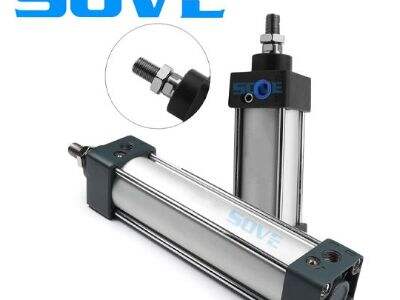The term pneumatic actuator sounds big, but they work in a simple and cool way. Read on for how these nifty gadgets work and why they’re so handy!
How Pneumatic Actuators Work
Pneumatic actuators (not electric) are devices that make stuff move using air. They are like tiny machines that can either push or pull things in all sorts of ways. Picture blowing up a balloon and releasing the air in a whoosh, allowing the balloon to fly around the room. But, that's sort of the way a pneumatic actuator works!
One essential part of a pneumatic actuator is a piston. When air is injected to the actuator, this piston expands/contracts. When the piston moves, it can cause other parts of the actuator to move as well, such as a robotic arm grabbing a toy off the floor.
The Power of Air Pressure
Before getting into how pneumatic actuators work, we have to TLDRs to air pressure. When you blow up a balloon, you fill it with air and build up pressure. This same concept applies for pneumatic actuators. Pumping air inflates it with pressure and moves the piston.
A special valve controls the flow of air going in and out of the actuator. The valve, like the knob on a faucet, lets you speed up or slow down the piston.
Applications of Pneumatic Actuators
For example, pneumatic actuators and OTHER PRODUCTS are found in many machines and devices such as robot arms in factories and automatic doors at stores. These are the most popular because they are efficient, reliable, and easy to control. In addition, they can work in most environments, hot, dusty, cold, wet.
They are successful due to their simple design and operation. Pneumatic actuators are used to operate a variety of projects quickly and precisely by utilizing the characteristics of air. This very ability makes them essential in automation and robotics.
How They Move
The basic concept of a pneumatic actuator consists of a series of pistons, valves and tubes that can create motion. The actuator is powered by compressed air that fills the actuator and acts upon a piston to drive it. When air is let out, the piston returns the other way.
This type of back-and-forth motion can be used to turn wheels, raise objects, or even open and close doors. By controlling the air flow with a valve, this piston can move at a specific speed and a percent length of each pull, making it perfect for something specific.
Conclusion
In summary, Electric actuators/cylinders are fascinating devices, which utilize air to generate movement. Learn how they function and come to terms with the ingenious design that makes these devices so convenient and practical.
So, next time you see a pneumatic actuator work its magic — be it as part of a robot arm or an automatic door — think of how compressible gas brings all of the above to life! And thank the air for making us move things around easily!


